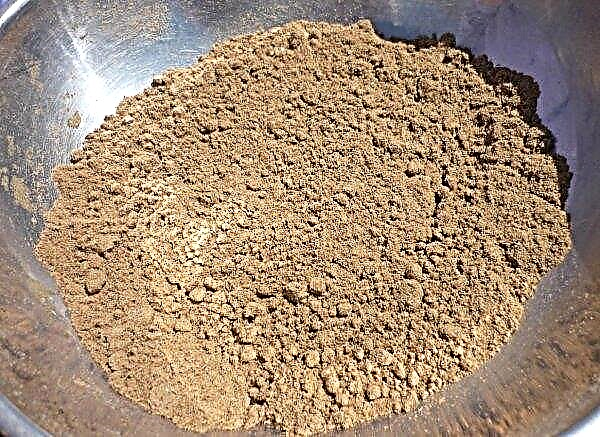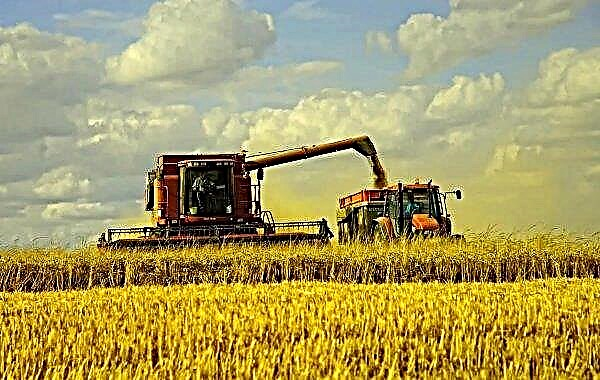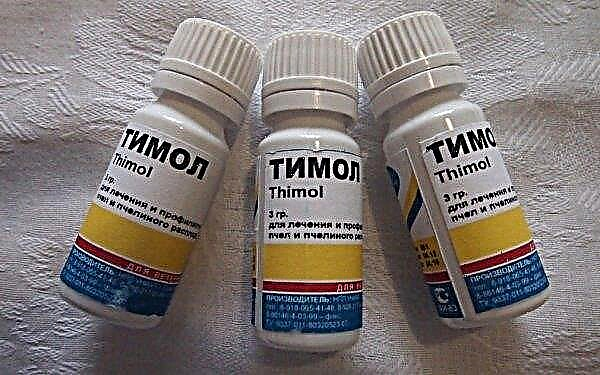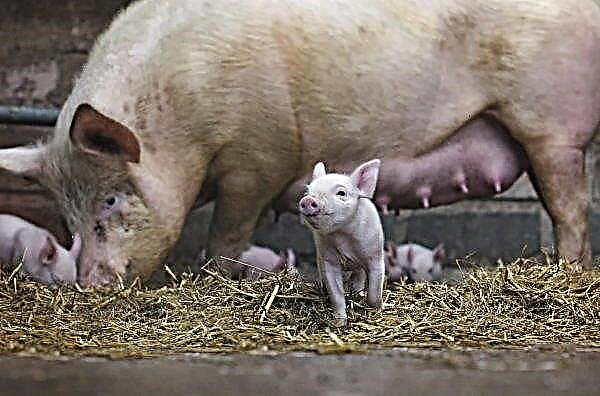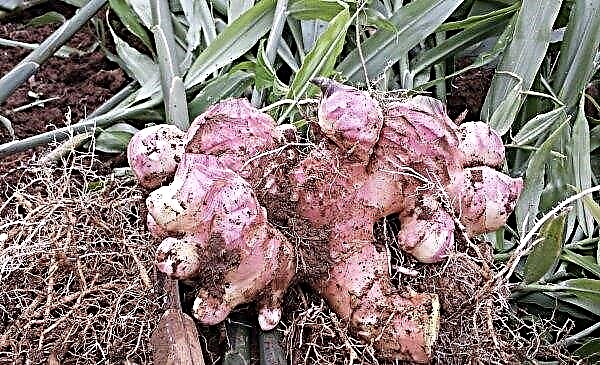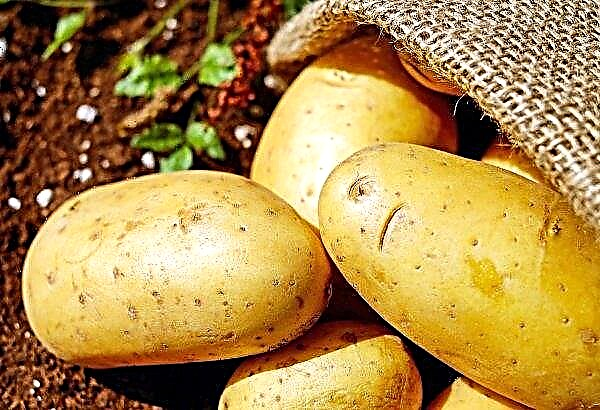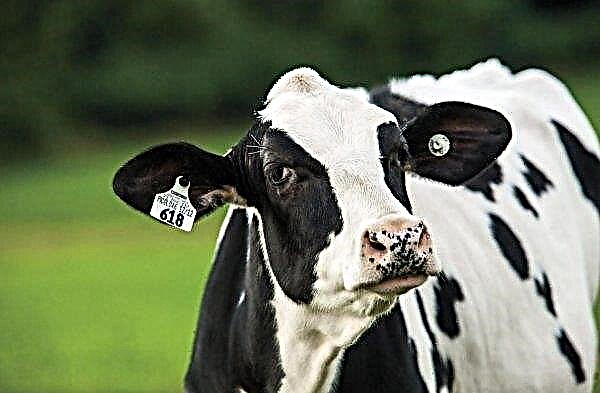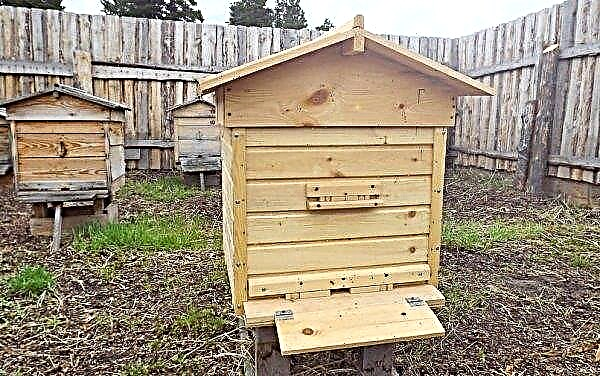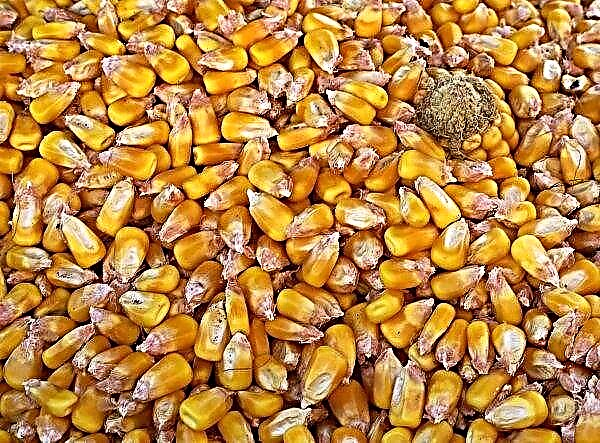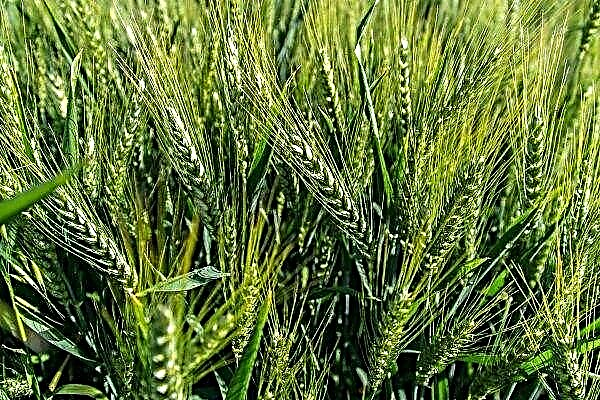Each animal may experience various complications during labor. So, in cows there is a delay in the afterbirth - this is a frequent occurrence among cattle, which should be prepared in advance. Let's look at the signs of this pathology, as well as the rules for assisting the animal in its occurrence.
After how much the cow’s afterbirth is normal
During calving (childbirth), the fetal bladder departs from the cow, in which the calf is located. After him, the aftermath immediately departs. However, this is not always possible. The placenta should normally depart at least 6 hours later, at most - after 10 hours.
Important! Many non-certified specialists (for example, milkmaids or farmers) believe that the afterbirth can go out during the day. But in this case, the animal has inflammatory processes that will significantly affect the state of health of the cow after childbirth.
If after such an amount of time you have not seen the last, then you must call the veterinarian. If it is impossible to call a specialist, you should act yourself.
Why there may be a delay and why it is dangerous
Delay separation of the placenta is possible for various reasons. Both internal factors (animal physiology) and external factors (poor care in the prenatal state) can arise: we will consider them in more detail in the table below.
| Intrinsic factors | External factors |
| Anomalies in the intrauterine development of the calf, which subsequently affect the calving itself - for example, dropsy. | Poor quality food, which during gestation affects the physical condition of the cow. For example, the animal becomes too weak and as a result cannot calve. |
| A large fruit or several fruits. In this case, a complex birth takes place, after which the cow may not have enough strength to separate the afterbirth. | The lack of vitamins and minerals, which determine the poor physical development of the cow and the impossibility of a normal uterine contraction. |
| A heavy calving that physically exhausts the cow, especially when the birth canal is damaged. Over the next few hours, the cow has no strength and uterine contractions are reduced. | Irregular walking or lack thereof. |
| Diseases of the animal that may affect the birth or condition of the cow during calving. | Obesity due to overfeeding. |
Did you know? Cows are able to learn from their relatives. So, if one animal receives an electric shock from the fence, then others will not approach it, since they already know what will happen in the end.
If, nevertheless, there was a delay in the afterbirth, then it is worth determining its type.
It happens:
- full;
- partial.
 Full delay the overhang is noticeable hanging from the genitals of the animal - red or gray-red. Usually they reach the hocks. You will understand that the last one did not come out, because the cow will begin to raise its tail, will tend to take a lying position and push.
Full delay the overhang is noticeable hanging from the genitals of the animal - red or gray-red. Usually they reach the hocks. You will understand that the last one did not come out, because the cow will begin to raise its tail, will tend to take a lying position and push.All these actions may not lead to a successful result, therefore, after 10 hours of such attempts, it is necessary for a person to act.
With partial delay the placenta will be fragmented, that is, parts of the tissues will not be enough. In this case, it is also recommended to wait up to 6-10 hours and only then provide assistance to the animal.
The considered pathology during calving threatens the animal with poor health in the future.
Firstly, with a complete delay in the afterbirth, infection with the infection is possible, which leads to inflammatory processes. Secondly, the restoration of the uterus can be complicated. Thirdly, improper help can lead to a breakdown of the placenta or other complications.
In the event that a partial or complete delay is not eliminated, after a few days the last will come out on its own, but with rotten masses, blood and mucus. With this outcome, the likelihood of further cow infertility will be extremely high.
Important! In normal childbirth, animals can eat afterbirth. This should not be allowed, otherwise it will lead to complications in the digestive system.
How is the pathology manifested?
There are a number of factors by which you can determine the delay of the afterbirth:
- The absence of placenta after the fetal bladder for 1-2 hours. In this case, it is worth starting to watch the animal.
- Curved back or posture, as if urinating.
- Continued weak contractions after calving. With them, high temperature is also possible.
 However, you should not always expect that the breath, pulse or body temperature of the animal will be changed. This may not happen, and all these indicators will be normal. Therefore, monitoring the cow after childbirth is an important component that allows you to immediately provide the necessary assistance.
However, you should not always expect that the breath, pulse or body temperature of the animal will be changed. This may not happen, and all these indicators will be normal. Therefore, monitoring the cow after childbirth is an important component that allows you to immediately provide the necessary assistance.Diagnostics
Already understanding how the pathology manifests itself, you can independently diagnose the delay of the placenta in the cow. If you have visually identified this case, then you need to contact a veterinarian who will make sure that the animal does indeed have the described complications after childbirth.
An experienced farmer himself can determine this pathology, but here you will need knowledge of veterinary medicine and sterile high gloves.
Important! We strongly do not recommend inspecting the animal to an unauthorized specialist.
How to separate the afterbirth of a cow yourself
If the birth is over, but the cow still could not bring up the afterbirth on its own, there is an opportunity to do this with your help. Such extreme measures should be taken in rare cases: for example, when childbirth occurs at night or the weather does not allow the specialist to reach you. So let's look at how you can help an animal.
Conservative method of separation of the placenta
This method involves the use of drugs - they should be stocked up at the initial stages of a cow’s pregnancy:
- Prostaglandins F2. Improve uterine contractions. It is necessary to introduce 2 ml intramuscularly.
- Oxytocin. Improves uterine contractions, increases the tone of the myometrium. Use 50 units subcutaneously (the dosage should first be discussed with the veterinarian, it can range from 30 to 60 units).
- "Pituitrin." It has the same effect as other drugs. Introduced 8-10 units subcutaneously. Dosage is approved in advance with a specialist.
 Among the tablets that have a broad effect, the following are introduced into the uterus:
Among the tablets that have a broad effect, the following are introduced into the uterus: - “Exuter” (2–5 pieces);
- "Septometrin" (3 capsules);
- furazolidone suppositories (from 2 to 5 pieces).
Did you know? There is an assumption that the hormone oxytocin affects the level of trust among people - the higher its level, the greater the trust in others, and also on the strength of fear of something.
Surgical intervention
The operation should only be performed by a veterinarian. It is prescribed if the conservative method was ineffective, and there was no improvement.
During this intervention, Novocain is administered to the cow, that is, epidural anesthesia is given. The veterinarian must treat the hands with a disinfectant solution and then wear sterile high gloves.
There are two cases of further development:
- The placenta is not attached to the uterus, and the veterinarian can easily get everything from the birth canal;
- tissue fused to the uterus.
In the second case, separation occurs using intrauterine parietal massage. That is why it is important that the veterinarian carry out the surgical intervention, since a person without special education is unlikely to know the technique of the operation.
After completion, an animal is examined and antibacterial agents are introduced to prevent infection.
Folk remedies
If you notice a delay, you can give the cow a sweet solution (500 grams of sugar is diluted in 2 liters of water). But in this case, the probability of the speed of the method is unlikely.
There is another way - to drink the animal amniotic fluid. It is believed that they are rich in hormones that will help the cow. For this method, 3-5 liters of amniotic fluid will be needed.
Another option for folk remedies is sweet water + salt water. Honey or sugar is stirred in 2 liters of water to make it sweet, a cow is watered. After 2-3 hours, she is given the same amount of salt water.
Did you know? The cow has its fingerprints. So, on the skin of the nasolabial mirror, each individual has lines and curls. They are unique, like fingerprints in humans.
Prevention
To prevent your animal from being stressed after childbirth due to a delay in the afterbirth, preventive measures must be taken.
These include:
- Regular walking.
- A balanced diet.
- Frequent examination by a veterinarian.
- Keeping your stall clean.
- The introduction of vitamins every 10 days during the last month of pregnancy.
 Subject to all recommendations, the likelihood that calving will go without complications is very high. Therefore, follow the animal and follow all the rules of care, especially during pregnancy, so that both the cow and the calf are healthy.
Subject to all recommendations, the likelihood that calving will go without complications is very high. Therefore, follow the animal and follow all the rules of care, especially during pregnancy, so that both the cow and the calf are healthy.

